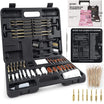As the temperatures drop in November, protecting your perennials becomes a top priority. These cherished plants add beauty to your garden year-round, but they need extra care to survive the harsh conditions of late fall and early winter. By following a few practical steps, you can ensure your perennials thrive, even when frost and cold set in.
Why Protect Perennials from Frost?
Perennials are generally hardy, but sudden temperature drops and persistent frost can cause damage. The roots, stems, and leaves are vulnerable to freezing conditions, leading to slower growth in the spring or even plant death. Taking preventive measures now can make a significant difference in your garden’s health and beauty come next spring.
Step-by-Step Guide to Protecting Perennials from Frost
-
Water Deeply Before the First Frost
Moist soil retains heat better than dry soil, providing some insulation for the roots. Water your perennials thoroughly before the ground freezes. This simple step can help retain warmth around the root zone and improve the plant’s ability to withstand cold snaps. -
Apply a Thick Layer of Mulch
Mulching is one of the most effective ways to protect perennials from frost. A 2-3 inch layer of mulch—such as straw, shredded leaves, or bark—can act as a natural insulator. Spread the mulch around the base of your perennials to keep the roots warm and maintain soil moisture during cold spells. Avoid piling mulch directly against the stems to prevent rot. -
Use Frost Blankets for Extra Protection
Frost blankets or row covers are excellent for shielding perennials from unexpected cold spells in November. These covers are made of breathable material, allowing moisture and light to reach the plants while providing warmth. For best results, cover your plants in the late afternoon and remove the blankets in the morning once temperatures rise. -
Cut Back Dying Foliage
As the season progresses, remove dead or diseased foliage from your perennials. This not only keeps the garden tidy but also reduces the risk of pests and diseases overwintering in the debris. However, avoid heavy pruning in late fall, as cutting back too much foliage can expose the plant to cold damage. -
Protect Potted Perennials
Potted perennials are more exposed to cold than those planted in the ground. Move pots closer to the house, where they can benefit from residual heat. If possible, group the pots together to create a microclimate and wrap the containers with burlap or bubble wrap to insulate the roots. -
Add a Layer of Compost
After the first frost, adding a layer of compost around your perennials can provide extra nutrients and warmth to the soil. Compost not only insulates the roots but also enriches the soil, boosting your plants’ resilience during winter. -
Consider Moving Sensitive Perennials Indoors
If you have perennials that are not fully cold-hardy, consider moving them indoors for the winter. Place them near a window where they can receive indirect sunlight and continue growing. Keep an eye on watering needs, as indoor plants often require less water.
Bonus Tips for November Perennial Care
- Create Wind Barriers: Strong winds can dry out plants, causing frost damage. Install windbreaks using stakes and burlap to shield your perennials from cold winds.
- Use Straw Bales: Positioning straw bales around your garden can provide extra insulation and protect delicate perennials.
- Check for Frost Damage Regularly: Be vigilant and monitor your perennials for signs of frost damage, such as wilting or blackened leaves. Early intervention can save a plant’s life.
Final Thoughts
Taking these simple steps to protect your perennials from frost and cold in November will ensure that your garden remains healthy and vibrant come spring. The effort you put in now will pay off with stronger growth, more blooms, and less maintenance in the upcoming seasons. Remember, consistent care during this transitional period is key to your garden’s long-term success.























Leave a comment
All comments are moderated before being published.
This site is protected by hCaptcha and the hCaptcha Privacy Policy and Terms of Service apply.